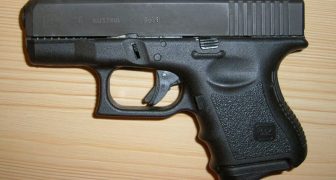This is a guest post by Andrew Betts 
.300 Remington – Walmart Defense Ammo?
I load my carry pistol and home defense rifle with premium ammunition but one of the things that really fascinates me is affordable ammunition that also has good terminal effect. If you want to set aside some ammunition for natural disasters, riots, economic collapse, etc. you probably want a lot of ammo, but you also want it to perform well. If you’re not particularly wealthy, you may be looking for a good balance of cost and performance. This intersection is what interests me.
Remington .300 Blackout 120 gr OTFB (open tip, flat base) is available at Walmart for about $16 for a box of 20, which is 80 cents a round. That wouldn’t be a very good price if we were talking about .223 FMJ, but .300 Blackout is more expensive than .223 and defense oriented .300 Blackout can be $1.50 per round or more.If this can also produce performance that is better than simple FMJ, it would be a decent balance of cost and performance.
When we analyze rifle ammunition to determine whether it is suitable for defense, the first question to ask is whether it meets the 12” minimum penetration standard. If it fails to penetrate at least 12” we can immediately dismiss it. If it can’t reliably reach vital organs after passing through a limb and striking the torso at an oblique angle, it is not suitable for defense. This load definitely meets that standard.
The next factor that we consider is the degree of tissue disruption it produces. Rifle ammunition may expand or  fragment as a mechanism of dispersing energy into the target. Open tip, lead core ammunition usually does not expand and this case appears no different. It did yaw (turn sideways) and it did fragment. While fragmentation is usually not desired in a pistol bullet, it is useful in a bullet that exceeds 2,000 fps. These higher velocity bullets create a large temporary stretch cavity that exceeds the elastic limit of tissue and causes tearing. The myriad of tiny fragments from a rifle bullet can aid the tearing and make the wound much worse.
fragment as a mechanism of dispersing energy into the target. Open tip, lead core ammunition usually does not expand and this case appears no different. It did yaw (turn sideways) and it did fragment. While fragmentation is usually not desired in a pistol bullet, it is useful in a bullet that exceeds 2,000 fps. These higher velocity bullets create a large temporary stretch cavity that exceeds the elastic limit of tissue and causes tearing. The myriad of tiny fragments from a rifle bullet can aid the tearing and make the wound much worse.

When all the factors are examined and in light of the price of this ammunition, this would make an excellent choice to purchase in bulk for a rainy day. Of course, there are many other loads that either perform better or cost less and you are the only one who can determine the best intersection of cost and performance.
As always, training and mindset are more important than any other factor. If you have the will to win and the skillset to get the job done, that will go much farther than the best bullet.
Andrew Betts served with the Arizona National Guard for over 12 years, including a tour to Afghanistan. Visit his YouTube Channel for more great shooting information.


Speak Your Mind